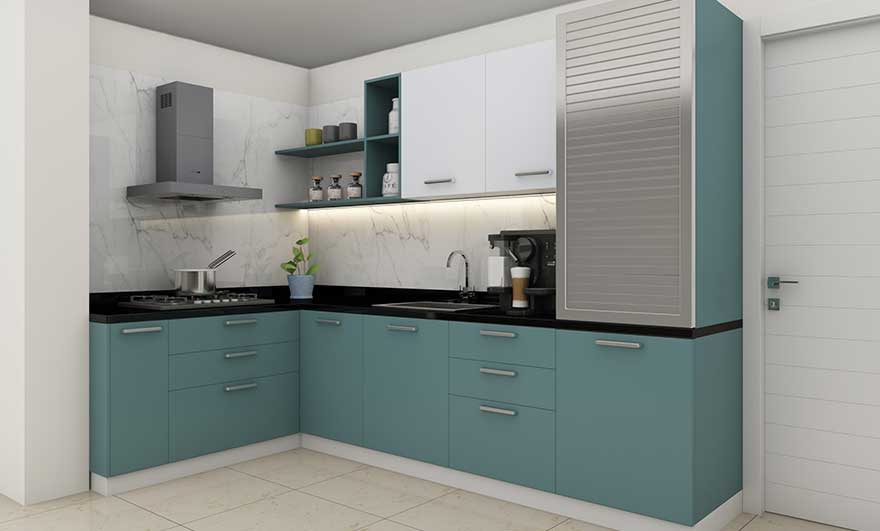How to Choose the Perfect Kitchen Design for Your Space and Lifestyle
The kitchen is the heart of the home, a space where meals are made, conversations flow, and family and friends gather. So when it comes to designing your kitchen, it’s important that the design suits not just your space but also your lifestyle. Whether you cook every day, entertain guests frequently, or simply want a functional area to grab your morning coffee, the kitchen design should meet your needs.
So how do you choose the perfect kitchen design that works with your space and lifestyle? It can be tricky with all the different options out there, but don’t worry, we’ve got you covered. Here’s how you can pick the best kitchen design for you, your home, and the way you live.
1. Understand Your Space
Before you jump into design ideas, it’s important to understand your kitchen space. The size and shape of your kitchen will influence the design options you can choose. For example, small kitchens might benefit from more compact layouts, while larger kitchens have the flexibility to include an island or dining area.
If you have an open-plan kitchen, the design should also flow seamlessly with the rest of the living or dining area. If your kitchen is more isolated, you might want a design that focuses on maximizing storage and efficiency, since it’s likely a space that gets less foot traffic.
Tip: Use a measuring tape and take accurate measurements of your kitchen. Knowing the dimensions will help you figure out which designs will fit best.

2. Think About How You Use Your Kitchen
Next, think about how you actually use your kitchen. Are you a passionate home cook who spends hours prepping meals, or do you prefer quick, easy meals and the occasional takeout? Your cooking habits will play a big role in the type of kitchen layout that works best for you.
For example, if you love to cook, you may want a kitchen with plenty of counter space, deep sinks, and organized storage for pots, pans, and utensils. On the other hand, if you don’t spend much time in the kitchen, you may prioritize convenience and easy-to-clean surfaces over extensive storage.
Tip: If you often entertain guests, consider an open kitchen with an island or breakfast bar where guests can gather while you cook. A modular kitchen with multifunctional storage might be helpful for someone who doesn’t have the time or energy for complicated cleaning.
3. Choose the Right Layout for Your Space
Kitchen layouts are a big part of how the space works. Some of the most popular kitchen layouts include:
- L-Shaped Kitchen: Great for smaller spaces and works well if you have an open-plan area. It offers easy access to all areas of the kitchen while keeping things compact.
- U-Shaped Kitchen: Ideal for larger kitchens, offering plenty of counter space and storage. It’s also great for creating a “work triangle” (sink, stove, and fridge) for maximum efficiency.
- Galley Kitchen: Perfect for small spaces or narrow kitchens. This layout uses two parallel counters and works well for someone who likes a straightforward, no-frills approach to cooking.
- Island Kitchen: Great for spacious kitchens, allowing for additional storage and a place to prep or entertain. An island also doubles as a gathering space for family and friends.
- Open-Plan Kitchen: If you like to be social while cooking, an open kitchen layout blends the kitchen with the dining or living room. It keeps things bright and airy and is perfect for modern homes.
Tip: Choose a layout that supports the way you use your kitchen. For example, if you do a lot of meal prep, an island kitchen or U-shaped layout might be ideal.

4. Maximize Storage with Smart Solutions
One of the most important aspects of any kitchen is storage. You can never have enough cabinets or counter space! Modular kitchens are great for maximizing storage and keeping things organized. You can install pull-out drawers, deep cabinets, pull-out pantry units, or even corner shelves that make use of every inch of space.
If you have a small kitchen, consider vertical storage—like tall cabinets or open shelves above the counter—to keep things off the countertop. If you have lots of kitchen gadgets and appliances, an island or extra cabinets with dedicated spaces can help keep everything in its place.
Tip: Add pull-out drawers or a lazy Susan to cabinets for easy access to pots, pans, and spices. It’s all about making sure everything has its own space.
5. Pick the Right Style and Aesthetic
The style of your kitchen should reflect both your taste and your home’s overall decor. There are many different kitchen styles to choose from, including:
- Modern Kitchens: Sleek, minimalistic, and often made with materials like stainless steel, glass, and wood. Modern kitchens focus on clean lines and high-tech appliances.
- Traditional Kitchens: Features warm wood tones, detailed cabinetry, and cozy, inviting designs. Traditional kitchens often use more natural materials and can have a rustic or farmhouse feel.
- Contemporary Kitchens: These kitchens incorporate a mix of modern and traditional elements, blending functionality with style.
- Industrial Kitchens: Exposed brick, steel, and wood combine to create a raw, urban look. This is a great choice for homes with an industrial or loft-style vibe.
The color scheme also plays an important role. Neutral tones like white, grey, or beige are always safe bets, but bolder colors like navy blue, emerald green, or even mustard yellow can add personality to your kitchen.
Tip: Think about the feel you want in the space. A traditional kitchen might have more wood and warmer tones, while a modern kitchen might go for metals and minimalist designs.

6. Consider the Future
While it’s important to design a kitchen that works for your current lifestyle, you should also consider how your needs might change in the future. Will your family grow? Will your cooking habits change? Designing a flexible, adaptable kitchen will save you from needing a complete overhaul down the road.
For example, if you’re planning on having children, you might want to add child-safe features, such as soft-close cabinets or rounded edges on countertops. If you plan to entertain more often, creating a bigger dining area or adding extra seating might be useful.
Tip: If you don’t plan to move any time soon, think about how your kitchen can serve you for the next 5-10 years. Investing in long-lasting materials like granite or quartz countertops might be a good idea.
7. Work Within Your Budget
Finally, before making any decisions, you need to think about your budget. Kitchen renovations can get expensive quickly, but there are ways to get the kitchen of your dreams without blowing your budget. Opt for affordable materials like laminate countertops instead of marble, or choose stock cabinets instead of custom ones.
It’s also helpful to break down your budget into different sections, like cabinetry, appliances, and labor, so you know exactly where your money is going.
Tip: Get quotes from multiple contractors or kitchen designers to ensure you are getting the best value for your money.

Choosing the perfect kitchen design for your space and lifestyle is all about finding a balance between style, function, and practicality. By understanding your space, considering how you use your kitchen, and choosing a layout and storage solutions that fit your needs, you can create a kitchen that will work for you for years to come. Don’t forget to think about future changes and always stick to a budget that works for you.
Once you’ve nailed down the design, your kitchen can become a functional, beautiful space that fits seamlessly into your lifestyle. Happy designing!
Read More Blogs On :- Freshvoicehub














Post Comment